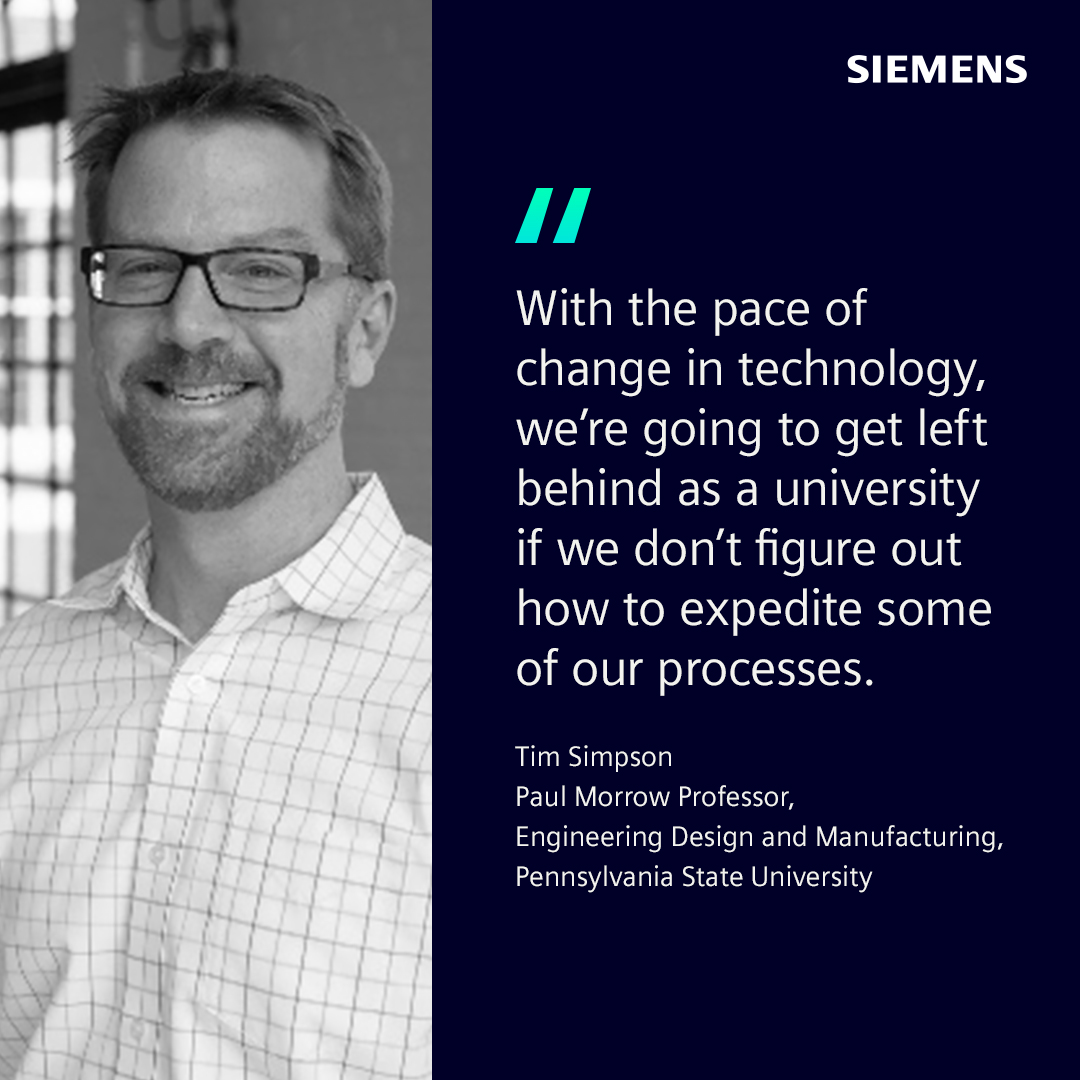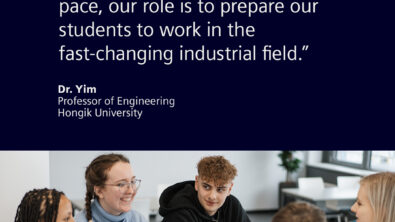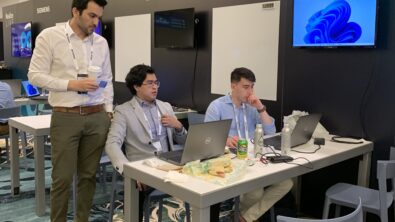The Impact of Changing Technology on Academia

We often discuss the need to close the divide between academia and industry, but what steps can we take to ensure that their collaboration is successful? As technology in the industry rapidly advances, how can academia keep pace? How can academia produce students who are passionate about technology, which the industry requires?
In this episode of “Innovation in the Classroom,” Tim Simpson, the Paul Morrow Professor of Engineering Design and Manufacturing at Pennsylvania State University, joins our host Dora Smith to discuss these issues. Tim and his students have collaborated with a wide range of companies on as many as 600 projects, including their recent work on preserving the aviation ecosystem.
We have to be more agile in what we’re teaching, how we’re teaching, when we’re teaching, than we’ve done previously.
Tim Simpson
Evolving Technology Changes Academia
Professor Tim Simpson, who has been at Penn State for almost 25 years, shared his experience on how evolving technology and changing industry standards have affected academia. Tim specializes in product design and development and has spent the last decade diving deep into 3D printing and Additive Manufacturing. His students with 3D printers were able to create a distribution network that provided needed supplies during the pandemic. He feels that 3D printing is a transformative technology that is disrupting and changing the way things are made and designed. He tries to understand the implications of working with companies and how to bring that back to the classroom to prepare students for the workforce. He has always tried to help designers and engineers make better decisions through methods and tools, and to verify and validate his work, he interacts with engineers and companies.
Staying Connected to Industry
Tim Simpson has tried various methods to interact with companies, such as through workshops and bringing companies into the classroom via projects for students. Through the senior capstone design programs, he has worked on hundreds of different projects with 500 to 600 different companies, improving his industry game and becoming conversant with what industry cares about. He has been able to articulate the benefits of their work and generate interest in companies to work on projects. Every engagement leads to three new research projects that are then shared with companies to generate the next round of interest. Throughout his career, Tim has put himself out there to engage and interact with companies to ensure that what he is doing is relevant to them.
Collaboration with industry
Tim Simpson acknowledges that the different timelines and budget cycles of industry can be difficult to navigate, but also recognizes the importance of preparing students for the real world. He has found ways to make collaborations work, such as utilizing full-time technicians and researchers in the lab, and working with undergraduates over the course of several years so that they can eventually manage and run research projects. This approach not only saves money for the company, but also provides valuable experience for the students and creates a direct pipeline for talent for the industry. Tim emphasizes the need to start planning for collaborations earlier and to understand the different mindset and rules of industry versus government agencies. It’s important to have academia-industry collaborations.
Learning Factory
Tim Simpson ran the Learning Factory capstone program that provided hands-on educational experiences for students across departments, including computer science, biomedical, and aerospace engineering. The program primarily focused on mechanical engineering and manufacturing projects, but he and his team had to figure out how to create equivalent hands-on experiences for other departments. They also had to find ways to allow industry to tap into the program, providing a meaningful, realistic, and engaging educational experience for students. However, he realized that companies, by size and maturity, had different demands. Large companies focused on using the projects as a recruiting tool, while smaller companies were more interested in specific technology or prototyping. Tim also emphasized that the program was an educational experience, not a contract, so expectations of both the students and the companies had to be managed carefully. Overall, he sought to find the middle ground that would benefit both the students and the companies involved without overextending or over-exerting either party. In terms of student recruitment, start-ups and smaller companies typically looked for students with an entrepreneurial mindset, who were willing to take on more roles and responsibilities.
Work with NASA
Tim Simpson is working with NASA’s complex systems design group on a project concerning the health and wellness of the aviation ecosystem. The project focuses on the challenges of the increasingly crowded skies with commercial airlines, civilians, defense, electric aircraft, drone delivery, and package delivery. The goal is to ensure that everyone stays safe and that everything operates effectively. He is on loan from Penn State to work with NASA part-time, and the project he’s working on is part of a group called Convergent Aeronautics Solutions, which is trying to be more innovative within NASA. The work includes looking at how to account for wind patterns for drones and simulating, modeling, and testing the supply chain. Additionally, they are exploring how NASA can be involved in regulating, coordinating, and researching the aviation supply chain.
Working in Academia during the Pandemic
During the pandemic, Tim Simpson adapted his 3D printing course and asked his students to design and develop ideas that could be 3D printed to aid the COVID-19 situation. His team was successful in developing the prototype of the face mask and the respirator, which they shared with senior leadership. His team grew from 30 people to 150 people. They helped doctors, the chief surgeon, the head of supply chain, and procurement by sourcing and 3D printing medical equipment.
Tune in to the full episode to learn more about Tim’s thoughts on how academia can collaborate with industry!
Connect with Tim

Innovation in the Classroom Podcast
Innovation in the Classroom by Siemens explores best practices to empower the next generation of digital talent. In this podcast series, Dora Smith takes you through discussions with leading voices from the world of engineering education who are preparing future engineers in Academia 4.0 to shape the world of innovation.


